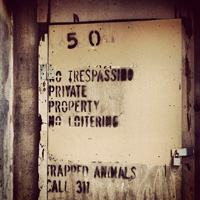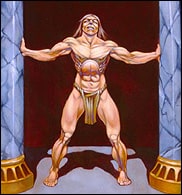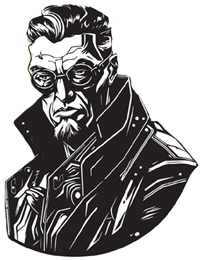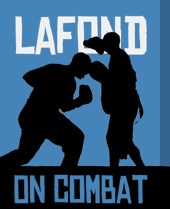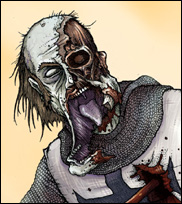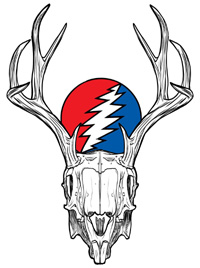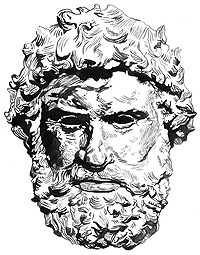A New History of Humanity, 592 pages, Farrar, Straus and Giroux
Thanks to Beast O’Neal for the gift of this book, who said, “I noted many similarities in Native American sources to your work, and, since its such a big book, I thought perhaps you could read it instead of my finishing it!”
Thanks, bro, and thanks.
These two learned and prolific authors, both academics step into the perpetual debate between the disciples of Hobbes and Rousseau, all of who miss the point, as do these two authors. The subject is the fantasy of rights and of social equality, both notions that are entirely Utopian and modern. They do find the first use of the term “equality” in a debate between the French soldier, and a Huron diplomat, penned by the former when he was on the run from the service he had deserted. It seems that the idea of equality as a social good is born of an Indian trying to explain to a European why he is a slave. This creeps into the discourse just about 1700 in Canada, at the Governor’s dinner table, at about the same time the term white, denoting a human economic unit with no racial distinction other than light skin, creeps into European language. The authors fail to investigate the French soldier’s slavery.
The inquiry into the all important question of equality of social outcome, a most stupid idea that no human with real life experience could possibly buy into, is abandoned as infantile by the authors who switch to a discover of when the odd notion came into European thought. They focus on later French, German and English thought and seem ignorant that the idea of the pre-Christian human being intruding on European Christian thought was hundreds of years older than North America, and began with the invasion of the Canary Islands, in which a fully heathen, fully European race of people were discovered and dealt with. [1]
I suspect this book to be a deeply honest attempt at the truth, and shall use it to explain how a specific American Amnesia is perpetuated which bars occupants of this continent from understanding anything about its past.
The authors employ the Jesuit Relations which I have skimmed. I shall use my gradual examination of this book in the Plantation America Project.
Omission #1
They do not mention that one of the Jesuits, Lajeun, described the Indians as naturally “white” and appearing like French peasants, although they read him more completely than I did.
Corruption #1
They disagree with Jesuit descriptions of Indians holding slaves. Whenever a scholar tosses primary sources out on post conceived notions the reader is being subjected to the Holy American Gaslight, the burning bush of Modernity, of the worship of THE LIE.
Omission #2
Use of Indians as galley slaves is noted, without context that the vast majority of such slaves were, and logically had to be, European. Combined with Omission #1 above, reinforcing the notion that only Europeans could hold slaves, and that only non Europeans could be slaves, despite the origin of the term slave having the greatest internal European antiquity.
Corruption #2
Warriors are describes as being primarily recreational hunters only dabbling on occasion in war, contrary to all period evidence, reflecting the feminine takeover of Native American identity politics over the past 50 years. This is a bald faced lie. A man had to KILL, capture a man to be a man!
Omission #3
The universal high regard that European multilingual debators who learned Indian languages to conduct religious debates with them, that tribal orators were better than Europeans and that tribesmen were generally smarter than Europeans, is presented as being based on daily leisure discussion. This omits the fact that such daily discussion was often concerned with how to kill and/or not be killed by enemy tribes, and that the counsel of war, as demonstarted by the autobiographies and biographies of Pontiac, Turtle, Blue Jacket, Tecumseh, Black Hawk and Geronimo, was the real genesis of tribal eloquence, as opposed to the bickering of civilized folk.
Corruption #3
Chiefs are described as being followed by warriors only as they fancied, omitting the fact that chiefs only gained power through results, by winning in battle, or making a beneficial logistical decision.
Omission #4
The French who were in contact with the tribes were described as consisting only of Priests, Trappers, Merchants and Soldiers. Omitted are the slaves that kept the priests alive, the slaves used by trappers as lackeys, the numerous slaves owned by each merchant, and the fact that nearly all soldiers were enslaved, rounded up at the point of a bayonet and forced into service.
Corruption #4
The omission of the majority unfree French, generally a 3 to 1 majority in woodland frontier settings, causes the corrupting idea that when Indians called Europeans slaves that they referred to self slavery, of money hunting and voluntary toil to keep from poverty in a world where the poor were allowed to freeze and starve, when in fact most Europeans were driven to work by the lash and the rod, not be greed. [2]
Omission #5
When the Indian diplomat Kandiaronk, debated with the French soldier Lahontan, an officer and volunteer, who had to flee service over jealousy and died in poverty and exile writing books of his experience, and who influenced the German thinker Leibniz, the tribesman points out that violent punishments within a tribe were alien to them. The foolish authors suppose that this was due to lack of violent action in general, when it was strictly interior to the tribe, and imply by default that the European criminal code was just. A brief look at French and English laws in the period under discussion would find more than 200 capital crimes, including theft of food, fishing, hunting, foraging, homelessness and being without a job, a master, a freedom pass or a coin. Most people remain invisible to inquiry due to the refusal to acknowledge that all races of humans are capable, by using force and by submitting to force, of holding slaves and of being enslaved. This omission dominates the unrevealed subtext of this well-meaning and quite naive book.
This takes us back to a reference in the introduction of the book, from a letter by Benjamin Franklin, who they neglect to point out was once a runaway slave, ran thousands of adds for the recovery of his racial fellows, and invented the term “Indentured Servant” as a way to imply the agency of an enslaved person in response to the habit of servants electing to go off and fight highly successful Indian warriors rather than continue toiling for Englishmen.
Corruption #5
Franklin relates that tribesman gone English prefer to return to tribal life and that children abducted by tribesmen never wanted to return to English life and would runaway to the tribes. This was obviously an expression of servitude and enslavement in English society, with many so-called abductees actually being runaways to groups who were racially mixed, with half of the Delaware chiefs having Gaelic names. The authors agree that many Europeans found high positions in eastern woodland tribes, and fail to note that they did not in western tribes. Overlooking this fact permits the authors t negelct to mention that racial distinctions were rarely mentioned in the eatsern woodlands. [3]
The Pre-Columbian Nordic/Gaelic migration hurdle cannot be crossed by academics, so will not be addressed here. What should have clued the authors in was this clause by Franklin:
[First, let us recall that Isrаel Potter mentioned being enslaved by “his friends,” in about 1770. I will comment in brackets.]
“...tho’ ransomed by their Friends [Franklin’s high case usage indicating a religious fraternity who collectively owns the individual.], and treated with all imaginable tenderness to prevail with them to stay among the English, yet in Short time they become disgusted with our manner of life [weekly beatings, imprisonment, travel restrictions, not being permitted to marry until 21 even for “free” men], and the care and the pains that are necessary to support it, and take the first opportunity of escaping again [escaping again, being an indication that these people had been liberated by the Indian ‘abductors’] into the Woods, from whence there is no reclaiming them.” [Reclaiming is not loving, familial action, but re possession of property.]
[One must pay attention to capitalized words of this period. “Woods,” being capitalized implies it as a refuge for runaways, not simply a land yet to be tilled, but a place where the people who would be forced to till the land already taken from the forest might run and hide.]
This final passage below went right over the daft academic heads:
“Once instance I remember to have heard, where the person was to be brought home to possess a good Estate; [therefore a member of the planter class] but finding some care necessary to keep it together [beating the lazy and reclaiming runaways, paying taxes, fending off real estate lawyers, etc.], he relinquished it to a younger brother, reserving to himself nothing but a gun and a match-Coat, with which he took his way again into the wilderness.”
The authors seem to assume that the man merely had to tend a garden to maintain an estate, when he would have had to ride heard over probably dozens of unfree people bound to his service, the most able of which would seek their freedom, those too lazy to run staying behind to vex him with their poor standards of achievement.
Conversely, the authors fail to point out that most of the inhabitants of that wilderness would be that man’s enemies eager for his scalp. Hence the gun, and hence the even greater desperation of women and unarmed youths who ran away again without lethal means, indicating that slavery among Indians was preferable to slavery among English. No understanding penetrates the ivory tower heads that simply staying alive in that wilderness was harder physical work than what a planter did on his Estate. He left an Estate!
One thing unknown to the authors, was that the laws of The Province of Pennsylvania where Franklin became so highly placed after escaping from the daily beatings administered by his elder half brother who owned him as an apprentice, stipulated that when a crime was alleged between an Indian and a Planter that a jury of 6 Indians and 6 Planters was convened. Among these Indians were Chiefs with Irish names. The English laws extended to the Indians, as free men, and to the Planters, and granted ZERO consideration to Europeans who did not own other Europeans, for planter meant nothing more or less then the owner of other men to be planted on the work site. English freedom could only be had by two means: of owning humans, and by bearing arms for those power brokers who owned humans, these two facets of Plantation life central to Bacon’s Rebellion in 1676 and the American Revolution in 1775.
I shall maintain this book at my Portland residence, where I live with Anglicized Indians, and work over a section of this useful and hopelessly naive attempt to understand humanity from the viewpoint of those whose ethos it is to deny our shared humanity.
…
Notes
-1. For the interested reader, a better and thinner book, with much less modern feminist intrusion, is titled The Discovery of Mankind, by a man whose name begins with an A, and who wrote in the 1990s.
-2. The Huron had outlawed money as the prime corrupting agent of social decay, similar to how Germanic Odinists of about 100 B.C. outlawed money and maintained this ethic until the A.D. 200s. See Tacitus, Germania.
-3. Red Skin referred to war paint, not pigment. Names for Europeans included: wearers of leg coverings, wearers of hats, takers of fat, long knives, and most commonly French, English, Dutch, Spanish and American. Names for tribesmen from most to least common were Savage [dweller in the sylvan, woods], Heathen [non Christian], the name of the tribe, and gradually, generally and ultimately Indian.


